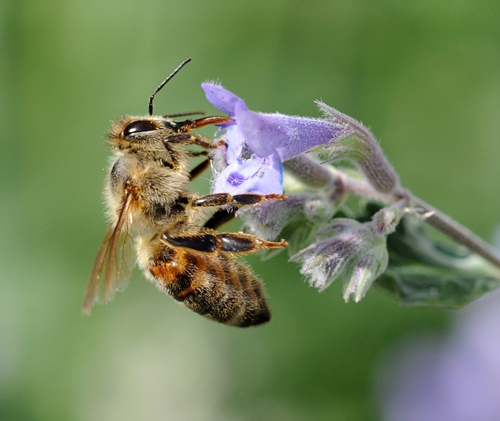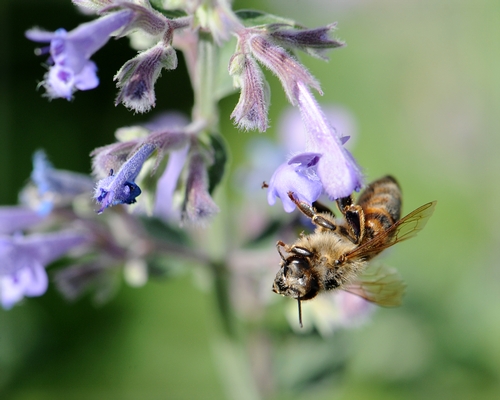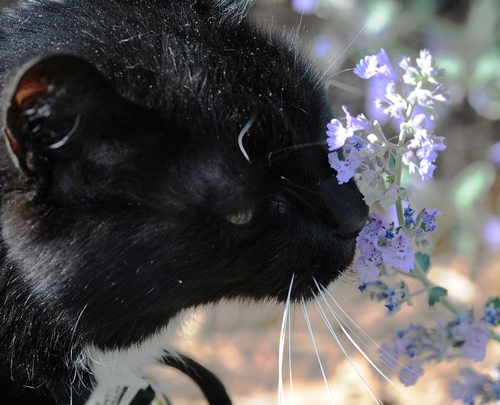Posts Tagged: cats
Feral cats are a threat to wildlife
Feral cats are thought to be responsible for the extinction of no less than 20 native Australian mammal species, reported Weston Williams in the Australia edition of the Christian Science Monitor. The population density is smaller than the density in North America and Europe, but their impact on the wildlife Down Under is of grave concern.
Australia is not alone. A 2013 study found that cats kill as many as 3.7 billion birds and 20.7 billion small mammals in the U.S. every year.
"All outdoor cats can pose risks to wildlife," said Niamh Quinn, UC Cooperative Extension human-wildlife interactions advisor based at the UC South Coast Research and Extension Center in Irvine. "Keeping cats indoors limits their risk to native species."
According to the story, many conservationists consider cats to be an invasive species and "tough measures" are required protect native animals from their carnivorous habits.
"Currently, trap-neuter-return (TNR) programs are not effective at curbing the population," Quinn said. "Mathematical models of feral cat populations indicate that 71 to 94 percent of a population must be neutered for the populations to decline, assuming there is no immigration . . . Current TNR programs are not operating at this rate."
In Australia, the federal government plans to cull 2 million cats over five years.
A Mockingbird Can Change Your Tune
Until last year, the noisy Northern Mockingbird (Mimus polyglottos) irritated me. Flitting from limb to fence to rooftop, this shrill impersonator of other birds’ song and sounds was not welcomed in my garden. But that was before a family of 10 moved into the neighborhood right across the street from my house and brought with them four felines that roam free 24-7. Needless to say, these cats prowl my front, side and backyard for birds. Within days, the seed feeders I had tacked atop fence posts and the bird baths I'd placed in the flowerbeds sat empty. No Towhees, Gold Finches or Robins. No Quail or Doves. Not even a Blue Jay or House Sparrow.
Now when I sat at my kitchen table sipping my morning coffee, I look out the window at cats slinking along the header of the wooden fence. Instead of enjoying the daily ritual of birds scratching the soil and sifting through leaves for insects, I see cats hiding behind bushes hunting for a feathered meal. Four uninvited cats licking their chops and leaving behind their business. Needless to say I'm one unhappy gardener. Yet what bothers me most is that I miss the twitter and squawk, the chatter and the chirp of bird song.
Until yesterday, I thought my days of listening to cheeps, coos and trills are history. Then out of the blue, a “many-tongued mimic” flitted into my backyard. Guess what? I was so excited to see a Mockingbird that I vowed never again to grouse about its mating call, even it woke me up at 2 a.m. This weekend I plan to rummage through the garage for paint to construct a small garden sign that reads:
ALL feathered friends welcomed here — even Mockers, Mimics and Misfits
Here are a couple of tidbits you might find interesting about the Mockingbird.
• The Latin name (Mimus polyglottos) really does mean “many-tongued mimic.” Recognized calls of the Mockingbird are: Hew call used to warn of nest predators and interaction between mates. Chat (used year-round when disturbed) or chat burst (specific to fall and used in territorial defense). Nest relief call and the begging call (used only by males).
• An omnivore that forages through vegetation and on the ground. Both male and female look alike, nest build, and are socially monogamous.
• The State bird of five states, known for its ability to recognize previous threats and intruders (including humans) and to return to prior breeding grounds. Today more Northern Mockingbirds live in urban habitats than rural areas and are considered a positive species.
For me, the very presence of this fascinating intelligent bird triggers an age-old in-depth conversation. Personally, I am at a loss for words, a good thing lest I write something naughty about the neighbors. Certainly, the Mockingbird’s reappearance in my yard is helping me change my tune about this amazing bird. But I can’t say the same about the cats. As a former “responsible” cat lover-owner who appreciates pets, I must be honest about these neighborhood free roamers. Seems to me that gardeners have little voice on the block to truly convey the environmental, emotional and spiritual impact of losing the sweet simple melody of their garden.
Yet maybe, in time, with enough cats as mentors, Mockingbirds will learn to meow. Now that’s a thought to ponder. I mean, can you imagine a 2 a.m. repertoire of screeching feline frenzy?

Mimus polyglottos (courtesy of Wikipedia.org)
In Mint Condition
Our catmint is in mint condition.So is the cat.The catmint (Nepeta mussinii) is a member of the mint family (Lamiaceae or Labiatae). It's a perennial...

Bee on Catmint

Tongue

Like an Acrobat

Cat Sniffing Catmint


